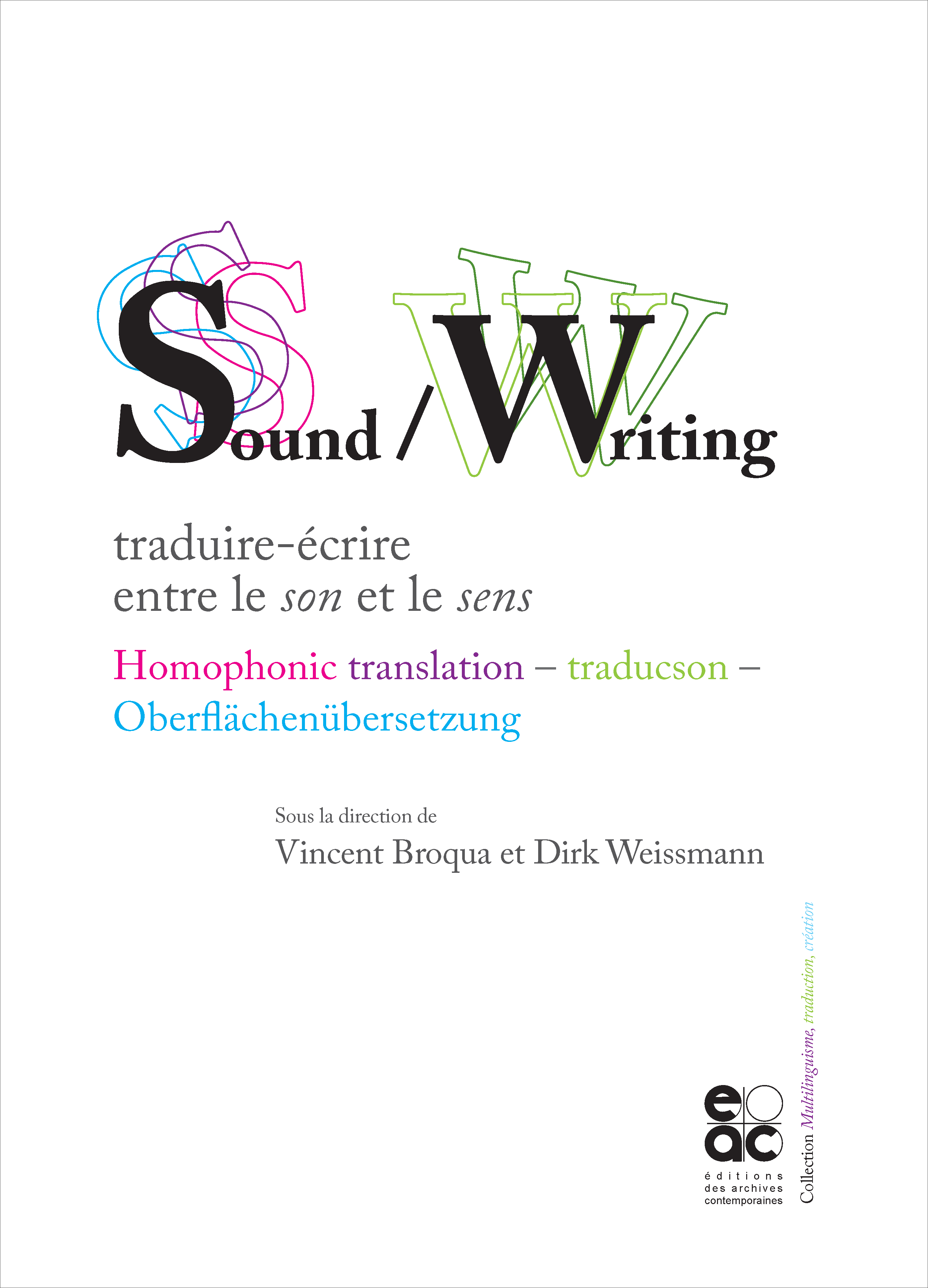- Publication,
-
Partager cette page
Sound /Writing : traduire-écrire entre le son et le sens Homophonic translation – traducson – Oberflächenübersetzung. Sous la direction de Vincent Broqua et Dirk Weissmann
Parution du volume papier

Depuis une bonne cinquantaine d’années, la traduction homophonique — aussi connue sous le nom de traducson ou de traduction de surface (de l’allemand Oberflächenübersetzung) — a fait son entrée dans le champ littéraire international, où elle est pratiquée par un nombre croissant d’écrivains, aux États-Unis, en Allemagne, en France et au-delà. À la suite de quelques pionniers tels que Louis Zukofsky, Ernst Jandl ou les membres du groupe Oulipo, ce genre littéraire hétérodoxe, entre traduction et création, s’est largement diffusé sur le plan international, notamment en poésie. Dans la mesure où elle entend transposer dans une autre langue les sonorités d’un texte sans se préoccuper, en premier lieu, de son contenu sémantique, la traduction homophonique peut faire l’effet d’une provocation, d’un canular. Or, en jouant le son contre le sens, le populaire contre le savant, le profane contre le sacré, cette pratique apparaît également comme un vecteur privilégié pour interroger, subvertir, déconstruire nos idées sur la langue, la traduction et la littérature.
Homophonic translation — also known as ‘sound translation’ or ‘surface translation’ (from the German: Oberflächenübersetzung) — made its entry into the international literary field a good fifty years ago at least, and is today practiced by a growing number of writers in the United States, Germany, France, and many other countries. Following such pioneers as Louis Zukofsky, Ernst Jandl, and the members of the Oulipo, this heterodox literary genre, falling somewhere between translation and creation, has spread widely across the international map, particularly in the realm of poetry. Consisting in the transposition of the sound qualities of a source text into another language without initially addressing that text’s meaning, homophonic translation may act as a challenge, or a provocation, or even a hoax. However, by playing sound against meaning, lowbrow against highbrow, the profane against the sacred, this technique also appears as a privileged vehicle to question, subvert, deconstruct our ideas on language, translation, and literature.
Ce travail a été réalisé avec le soutien du laboratoire d’excellence TransferS (programme Investissements d’avenir ANR-10-IDEX-0001-02PSL et ANR-10-LABX-0099). The Melodia E. Jones Chair (State University of New York at Buffalo) provided financial assistance for the publishing of this volume.
Plus d'informations sur le site de l'éditeur


